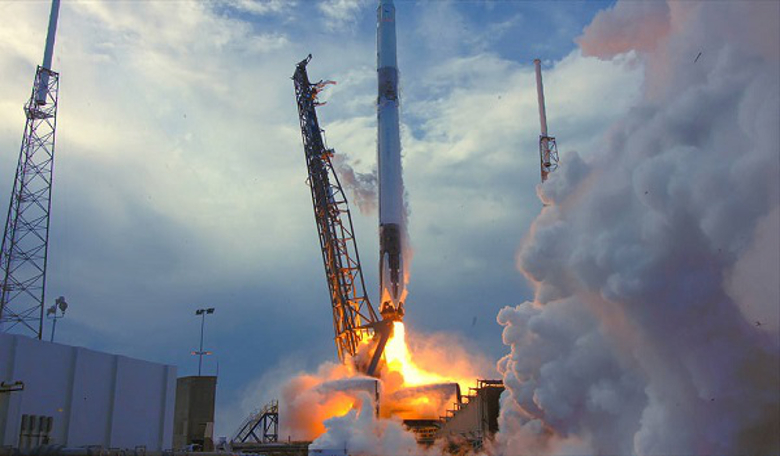The 14th SpaceX commercial resupply mission to the International Space Station that blasted off on 2 April has aboard some very interesting cargo amongst the supplies and equipment it is due to deliver.
Along with scientific payloads to investigate growing food in space, the effects of microgravity on bone marrow and how materials behave in space, the reusable Dragon spacecraft is packed with an observatory that will study severe thunderstorms in our atmosphere and an orbital debris removal satellite equipped with a net and a harpoon to capture and dispose of space junk.
From its perch on the exterior of the European Space Agency (ESA) Columbus module, the storm-hunting Atmosphere-Space Interactions Monitor (or ASIM for short) will search for high-altitude electrical discharges associated with stormy weather conditions. It will search for phenomena that sound more at home in a magically garden but instead are transient luminous events known as sprites and ELVES.
Sprites are in fact flashes caused by electrical break-downs in the mesosphere and “blue jets” – another type of discharge that propagates upwards into the stratosphere from cloud tops. ELVES on the other hand are concentric rings of emissions caused by an electromagnetic pulse in the ionosphere.
These bursts of high-energy radiation are examples of a little-understood part of our atmosphere and their existence had been debated for years. However these new weather phenomenon were finally captured on camera by ESA astronaut Andreas Mogensen during his mission on the International Space Station in 2015.
ASIM will therefore use a suite of instruments including light sensors and X- and gamma-ray detectors in order to study the inner anatomy of these luminous phenomena from its unique vantage point 400 km above Earth, in greater detail than is possible from the ground.
Next up is an experiment to try and tackle the growing problem of orbital debris littering the space surrounding our planet. Built by Surrey Satellite Technology Ltd. (SSTL) with contributions from across Europe, the RemoveDebris spacecraft will be deployed by astronauts from the ISS to test four orbital debris technologies using a pair of target CubeSats.
The first experiment will use a net to seize one of the CubeSats, while the second will track the CubeSat with Light Detection and Ranging (LIDAR) and once the target is acquired it will spear a test plate that represents a satellite panel with a harpoon, to simulate a real spacecraft being hit and captured.
The RemoveDEBRIS platform will also have a dragsail payload – an inflatable mechanism that deploys to a length of 1 metre and self-hardens. The dragsail will allow the satellite to reduce its orbit more quickly, thus ensuring that it reenters the Earth’s atmosphere to burn up on a faster timescale.
“Since the beginning of the space era, orbital debris has progressively been building up and there are now almost 7,000 tons of it around the Earth,” SSTL Executive Chairman Martin Sweeting said. “It is now time for the international space community to begin to mitigate, limit and control space junk and I am very pleased that the RemoveDEBRIS consortium is leading the way with an innovative ADR mission which I hope will be a precursor to future operational ADR missions.”











